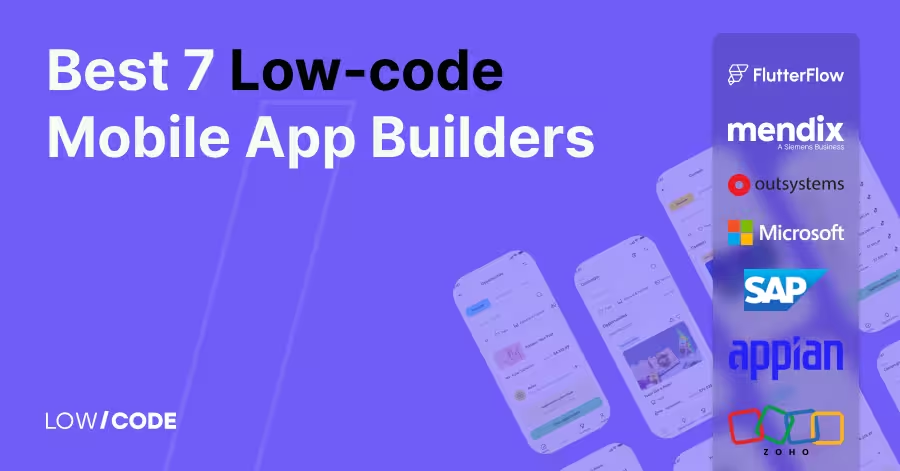No-code Agency vs Traditional Agency | Guide for Founders
15 min
read
Compare no-code agencies and traditional development agencies across speed, cost, scalability, ownership, and more. Find out which is right for your next app
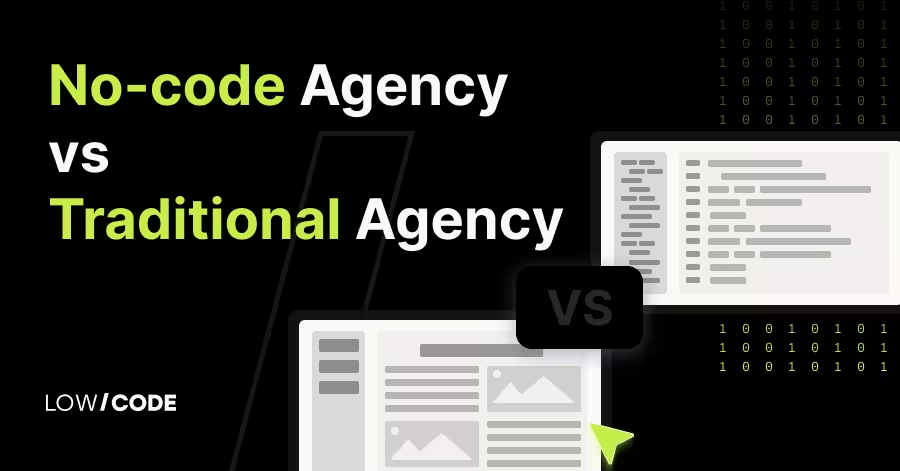
What Is a No-code Agency?
A no-code agency focuses on creating applications using modern no-code platforms like Bubble, Glide, Webflow, FlutterFlow, and Airtable, along with automation tools like Make, n8n, and Zapier.
Instead of writing thousands of lines of code, these agencies use visual tools and pre-built logic to deliver apps faster than traditional agencies. Working with no-code experts means you get speed, scalability, and professional design without compromising quality.
No-code agencies excel at building a wide range of applications:
- CRMs to manage customer relationships.
- Marketplaces for products, services, or rentals.
- Internal tools that automate workflows.
- Custom Automations to connect software and reduce manual tasks.
- MVPs for startups validating ideas quickly.
- Mobile apps for iOS and Android.
- AI-driven apps that integrate smart automation and insights.
By combining design, strategy, and technical expertise, no-code agencies turn ideas into scalable products in weeks rather than months, making them ideal partners for businesses that value speed and efficiency.
What Is a Traditional Development Agency?
A traditional development agency focuses on custom-coded software built from the ground up. They typically use programming languages like JavaScript, Python, or Java to create highly tailored applications.
These agencies specialize in handling high-complexity projects such as enterprise-grade systems, advanced mobile apps, or software requiring unique architectures.
The way they build apps is different from no-code. Each function is written manually, and every feature requires custom development. While this allows complete control and flexibility, it also means longer timelines, larger budgets, and bigger teams. Testing, QA, and maintenance become critical parts of the workflow, adding to the overall effort.
Read more | How to Build AI HR App
Speed of Development
One of the biggest differences between no-code agencies and traditional development agencies is speed. No-code drastically reduces build time, allowing businesses to launch, test, and adapt much faster than traditional coding ever could.
Read more | How to Build an AI App for Customer Service
How fast can a no-code agency build your app?
No-code agencies typically deliver MVPs within 4–8 weeks, making them perfect for startups or companies that need to move quickly. Visual development tools allow teams to build prototypes in days, then refine them based on real feedback.
Iteration cycles are shorter, so updates happen faster without months of waiting. This approach is ideal for testing new ideas, validating business models, or launching client portals and internal tools where speed-to-market is critical.
By combining visual workflows with expert guidance, no-code agencies help you save both time and resources.
Read more | How to Build an AI app for the Restaurant Business
How long does traditional app development take?
Traditional app development can take 3–6 months or longer, depending on complexity. Every stage — design, backend setup, frontend coding, and testing—is done manually, requiring larger teams and longer timelines.
Feedback loops are slower because developers must rework code instead of adjusting visual components. Documentation, handoffs, and QA also add extra layers of delay. While this process creates highly customized solutions, it’s far less efficient for businesses needing quick results.
For founders under pressure to launch fast, the traditional route often feels like a roadblock compared to the agility of no-code agencies.
Read more | How to Build AI Ecommerce platform
Project Cost and Budget Flexibility
Cost is one of the most important factors when choosing between a no-code agency and a traditional development agency. No-code offers a far more budget-friendly path, while traditional development demands a significant financial commitment.
What does it cost to hire a no-code agency?
Hiring a no-code agency is typically 60–80% cheaper than working with a traditional dev shop. Costs are lower because you don’t need large developer teams, DevOps engineers, or heavy infrastructure setups.
With visual platforms, much of the complexity is already handled, which reduces both time and labor expenses. No-code agencies also tend to offer predictable pricing models, often tied to milestones or project phases, which makes budgeting easier.
This combination of affordability and clarity often results in a faster ROI, making no-code an attractive option for startups and businesses with limited resources.
Read more | How to Build AI-driven App for Event Planning Business
Why is traditional development more expensive?
Traditional development is expensive because it requires multiple specialized developers, architects, and QA testers to build everything from scratch. Each feature, integration, and backend process adds hours of labor and significant costs.
After launch, ongoing maintenance, bug fixes, and updates further increase the budget, often leading to unpredictable expenses. This model may suit enterprises or organizations with large IT budgets that prioritize full customization and deep control over every line of code.
However, for most startups or growing businesses, these costs can quickly become unsustainable compared to the lean, flexible approach of no-code agencies.
Read more | How to build AI-driven Accountant App
Team Structure and Workflow
The way teams are organized plays a big role in how quickly and effectively your app gets built. No-code agencies rely on lean, agile teams, while traditional agencies use larger, specialized groups that follow heavier processes.
What is the typical team size in a no-code agency?
A no-code agency usually works with a lean team of 3–5 people, often including a project manager, a designer, and one or two no-code developers. Despite the small size, these teams are highly efficient because no-code tools handle much of the heavy lifting that would normally require multiple specialists.
Workflows are agile, with direct involvement from founders or business owners at every stage. This setup ensures faster communication, quicker iterations, and more alignment between business goals and the final product.
Read more | Top 6 Automation Agencies
How does a traditional agency team operate?
Traditional agencies rely on larger, specialized teams that include backend developers, frontend developers, QA testers, DevOps engineers, and project managers. Projects typically move in a linear flow design, development, testing, and deployment — each requiring heavy documentation and approvals.
Because of this structure, feedback often gets delayed, and founders may need external stakeholders, like product managers or consultants, to bridge communication between technical teams and business goals.
While this approach delivers highly customized solutions, it is slower and less flexible compared to the agile style of no-code agencies.
Read more | How to Build an AI Nutritionist App
Customization and Technical Flexibility
One of the biggest questions founders have is whether no-code apps can truly match the flexibility of custom-coded solutions. While traditional coding offers unlimited possibilities, modern no-code platforms now cover most business needs with faster, more efficient workflows.
Read more | Best Web Development Agencies
How customizable are no-code agency-built apps?
Apps built by no-code agencies can handle 80–90% of standard business logic, making them suitable for most startups and internal tools. Platforms like Bubble, Glide and FlutterFlow provide advanced features such as conditional logic, database management, and API integrations.
Many no-code platforms also support plugins or third-party extensions, giving extra functionality when needed. For businesses that don’t operate in extremely niche scenarios, this level of customization is more than enough.
Combined with the speed of no-code development, agencies can deliver apps that feel highly tailored without the overhead of traditional coding.
Read more | Best Mobile App Development Agencies
What level of flexibility do traditional agencies offer?
Traditional agencies offer unlimited customization at the code level, making them the best choice for projects with complex systems, edge-case logic, or highly specialized needs. Developers can build everything from scratch, design unique architectures, and optimize performance down to the smallest detail.
However, this flexibility comes at the cost of time and resources. Every customization requires additional coding, testing, and debugging, which stretches timelines and budgets.
While technically limitless, this approach is often unnecessary for most businesses, where no-code platforms already cover the majority of requirements efficiently.
Ownership and Platform Dependence
Beyond speed and cost, another key factor to consider is ownership. No-code and traditional agencies approach this very differently, especially when it comes to source code and long-term control over your product.
Do no-code agencies offer full app ownership?
When you work with a no-code agency, the logic, design, and workflows are yours, but the app is tied to the chosen platform. Tools like Bubble or Glide don’t provide direct access to raw source code, which creates a layer of platform dependency. Some platforms, like FlutterFlow, offer export options, and open-source no-code tools can reduce the risk of lock-in.
For most businesses, this trade-off is acceptable since it speeds up delivery and lowers costs, but it’s important to be aware that the app is partly dependent on the vendor’s ecosystem.
Read more | Best MVP development agencies
How do traditional agencies ensure code ownership?
Traditional agencies give you full access to source code, Git repositories, and server environments, ensuring long-term control. This setup makes it easier to migrate your app between hosting providers or bring in a new team if needed.
For businesses prioritizing independence, transparency, and the ability to maintain apps over decades, this model offers stronger ownership.
The downside is higher upfront costs and slower timelines. While it grants complete freedom, it also comes with greater responsibility for managing updates, infrastructure, and technical debt.
Scalability and Performance
Every founder eventually asks: will the app scale as the business grows? Both no-code and traditional approaches offer scalability, but the level and ease of scaling differ greatly depending on the project’s demands.
Can apps from no-code agencies scale for large users?
Apps built with no-code agencies can scale to thousands of users when built on platforms like Bubble, FlutterFlow, or Glide. With proper architecture, vertical scaling and efficient database design help maintain solid performance.
However, no-code apps may face limitations under extreme conditions, such as handling very large data sets or high concurrent activity. These challenges often require creative workarounds or integrations with external services.
For most startups and mid-sized businesses, no-code scalability is more than enough, especially when paired with expert guidance to avoid common pitfalls in design.
Read more | Procurement automation guide
Are traditional agency-built apps better for scalability?
Traditional agencies have the ability to fine-tune every layer of the application for maximum performance. From multi-threaded backend systems to optimized databases and custom infrastructure, they can support apps with high traffic, real-time interactions, streaming, or big data processing.
This makes them the preferred choice for enterprise-grade solutions where millions of users or intensive workloads are expected.
The trade-off, however, is time and cost. While traditional builds deliver unmatched scalability, most startups won’t need this level of optimization until much later in their growth journey.
Maintenance and Post-launch Usability
Launching an app is just the first step — keeping it updated, secure, and running smoothly is just as important. Here’s how post-launch maintenance differs between no-code and traditional agency-built apps.
Who handles updates in a no-code agency app?
With no-code platforms like Bubble or Glide, core hosting, patches, and scaling are handled automatically by the platform itself. This reduces the technical burden for businesses. Many no-code agencies like LowCode Agency also offer ongoing support packages or can hand off maintenance to an internal team once the app is stable.
For non-technical founders, this setup is ideal since small tweaks, new pages, or automation updates can often be managed without hiring full-time developers. The simplicity of post-launch usability is one of the biggest advantages of working with a no-code agency.
Read more | AI fitness app development guide
What kind of maintenance is needed for traditional apps?
Traditional apps require dedicated developer support to handle bug fixes, new features, and security updates. Hosting, uptime monitoring, and infrastructure scaling must be managed either in-house or through outsourced DevOps teams.
This gives businesses full control but also adds ongoing costs and responsibilities. Companies with strong IT departments are better suited for this model, as they can handle continuous code reviews, patch management, and infrastructure scaling.
While it provides flexibility and customization, it demands more time, resources, and technical expertise than no-code agency maintenance.
Integration Capabilities
Modern apps rarely work in isolation — they need to connect with other tools, services, or systems. No-code and traditional agencies both support integrations, but the depth and flexibility differ depending on your business requirements.
What integrations can a no-code agency support?
No-code agencies can set up thousands of prebuilt or even custom integrations through platforms like Zapier, Make, and n8n or by connecting directly with native APIs. Tools like Bubble and FlutterFlow also support REST and GraphQL APIs, allowing smooth communication with external databases, CRMs, or payment gateways.
For most businesses, these integrations are fast, affordable, and cover everyday needs like marketing automation, customer data syncing, and financial workflows.
The ability to connect apps without heavy coding makes no-code a practical solution for companies that want rapid automation and streamlined operations.
Read more | Web MVP development
Do traditional agencies offer deeper integrations?
Traditional agencies excel at custom, deep-level integrations with complex or legacy systems. This includes private APIs, SDKs, or specialized setups often required in industries like banking, ERP systems, or telecom. While no-code platforms can connect with modern SaaS tools, they may struggle with legacy infrastructure or highly customized business processes.
Traditional coding allows precision control, giving enterprises the ability to tailor integrations down to the smallest detail. The trade-off is more time, resources, and cost, but for mission-critical systems, traditional builds offer unmatched flexibility and reliability.
Security and Compliance
Security is one of the most critical considerations in app development. Both no-code and traditional agencies prioritize it, but their approaches differ depending on the platform or coding framework used.
Are no-code agency apps secure for business use?
No-code agency apps are generally secure enough for SMBs and startups, as leading platforms like Bubble are SOC 2 compliant and some even offer HIPAA-ready setups for healthcare. Security features such as SSL certificates, role-based access control, and privacy rules are built into the platform by default.
This reduces the risk of misconfigurations for smaller teams without dedicated IT staff. While these protections meet the needs of most businesses, highly regulated industries may still face limits if their compliance demands go beyond what no-code platforms currently offer.
Read more | AI business process automation guide
How do traditional agencies handle security and compliance?
Traditional agencies have the ability to design custom-built security protocols tailored to business requirements. This includes advanced encryption, detailed access controls, intrusion detection systems, and compliance with enterprise-level standards such as ISO 27001, PCI-DSS, or HIPAA. With full control over code and infrastructure, traditional teams can adapt security layers to fit industry-specific regulations.
This makes them a stronger fit for fintech, healthcare, or large enterprise systems where compliance is non-negotiable. However, this depth of customization requires additional time, resources, and higher costs compared to no-code’s platform-managed security.
Best Use Cases and Fit
Not every project requires the same development approach. Some ideas thrive with no-code speed and flexibility, while others demand the precision and depth of traditional coding. Choosing the right fit depends on your app’s complexity, budget, and long-term goals.
What types of projects are ideal for a no-code agency?
No-code agencies excel at building CRMs, dashboards, internal tools, marketplaces, and client portals. They are also great for SaaS MVPs, admin panels, and resource hubs where speed-to-market is essential.
Startups, solopreneurs, and even established agencies benefit from no-code because it delivers polished products quickly and at a fraction of the cost of traditional development.
With the ability to launch in weeks, no-code is best suited for projects that need validation, automation, and scalability without heavy upfront investment.
Read more | Custom CRM development guide
When is a traditional agency a better fit?
Traditional agencies are the right choice for apps requiring advanced AI/ML models, video streaming platforms, or 3D gaming applications. These projects demand deep customization, high-performance optimization, and specialized coding expertise that no-code platforms can’t fully support.
Enterprises with strict security, compliance, and performance requirements also lean toward traditional agencies, as they can fine-tune infrastructure for mission-critical workloads.
While timelines and costs are higher, this approach ensures long-term control and technical flexibility. For projects where performance and security cannot be compromised, traditional development remains the stronger fit.
The Rise of Hybrid Approaches
As businesses mature, many find that relying on only no-code or only traditional coding doesn’t always give the perfect balance. This has led to the rise of hybrid models, where teams combine no-code speed with traditional coding flexibility.
What is a hybrid no-code and traditional development model?
A hybrid model uses no-code for the frontend and custom code for the backend. For example, the user interface might be built with Bubble or FlutterFlow, while the backend runs on Firebase, Supabase, or a custom API.
This setup lets you design and iterate quickly using a visual builder, while offloading complex logic, data handling, or performance-heavy tasks to custom-coded services. It blends the best of both worlds — speed of no-code with the scalability of traditional coding.
Read more | Build AI-Powered Mobile Apps
When should you combine no-code with custom code?
A hybrid approach makes sense when your MVP starts to outgrow platform limits and requires more advanced logic or integrations. It’s also the right choice if you need to connect with core systems that aren’t supported natively in no-code platforms.
Many teams choose hybrid to avoid a full rebuild, keeping the fast iteration of no-code while adding custom layers for scalability and flexibility. This way, businesses maintain agility without sacrificing technical depth.
Read more | Insurance Mobile App Development Guide
Collaboration and Client Involvement
The way clients engage with agencies can shape the entire development journey. No-code agencies lean toward speed and transparency, while traditional agencies often follow structured, documentation-heavy processes.
How do no-code agencies involve clients in the build process?
No-code agencies encourage active client involvement through live previews, interactive prototypes, and frequent check-ins. Clients can see progress in real time, provide immediate feedback, and even help plan workflows or UI logic alongside the team.
This collaborative approach shortens decision-making cycles and keeps the product closely aligned with business goals. Because changes can be implemented quickly in visual builders, clients feel more engaged and in control of the project.
This makes no-code agencies especially effective for startups or teams that value rapid iteration and flexible collaboration.
What is the client experience with traditional agencies?
In traditional agencies, client involvement follows a more formal process. Feedback is usually provided at fixed milestones, filtered through specifications, wireframes, or requirement documents. This creates slower feedback loops but ensures every detail is carefully documented and agreed upon.
While this model works well for enterprises or projects with long-term roadmaps, it can feel rigid for businesses that need quick adjustments. The trade-off is stability: traditional agencies offer predictability and control, but at the cost of speed and flexibility in client collaboration.
Final Thoughts: Which Agency Should You Choose?
Both no-code and traditional agencies bring unique strengths to the table. The right choice depends on your business goals, timeline, and technical requirements. Here’s how to decide which model fits your project best.
Is a no-code agency the right choice for your next app?
A no-code agency is ideal for startups, SMEs, and teams that prioritize speed-to-market and cost efficiency. They can deliver MVPs and production-ready apps in weeks, not months, making them perfect for testing ideas, launching internal tools, or scaling early-stage products.
With platforms like Bubble, Glide, or FlutterFlow, apps remain flexible and scalable enough for most business needs. Add in budget-friendly pricing and faster ROI, and no-code agencies become the smart choice for businesses that want results without heavy technical overhead.
When does it make sense to hire a traditional agency?
If you’re building real-time systems, AI/ML solutions, video streaming platforms, or apps that must integrate with legacy infrastructure, traditional development offers unmatched flexibility.
They also ensure full code ownership, which is crucial if long-term control and independence are priorities. While timelines and costs are higher, traditional agencies provide precision and depth that no-code platforms can’t always match — making them the right fit for enterprises and mission-critical projects.
Created on
August 24, 2025
. Last updated on
November 18, 2025
.

FAQs
Are no-code agencies reliable for full apps?
Can a no-code app grow with my business?
What kind of apps are best built with no-code?
Is no-code just for MVPs or internal tools?
What happens if I outgrow a no-code platform?
Is working with a no-code agency faster than hiring developers?





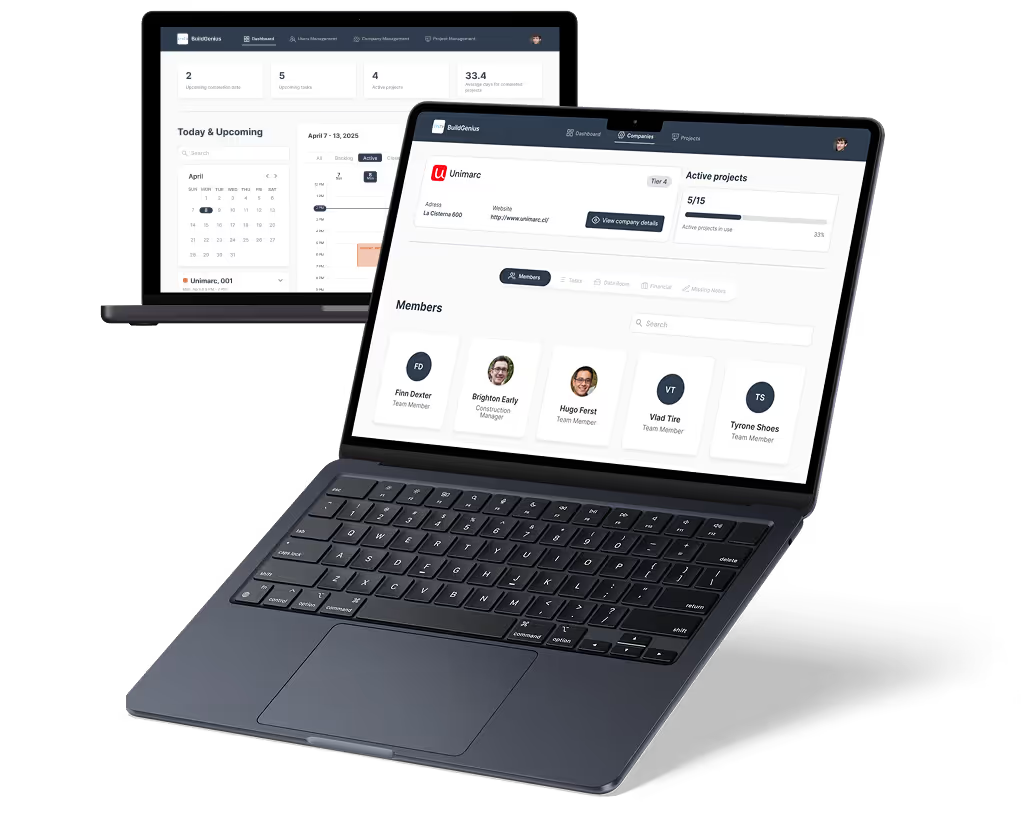

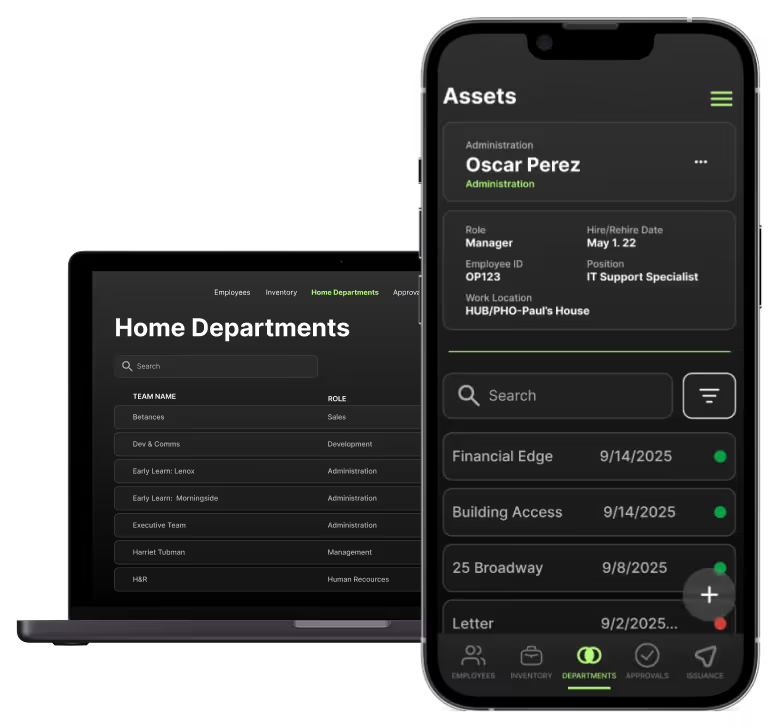
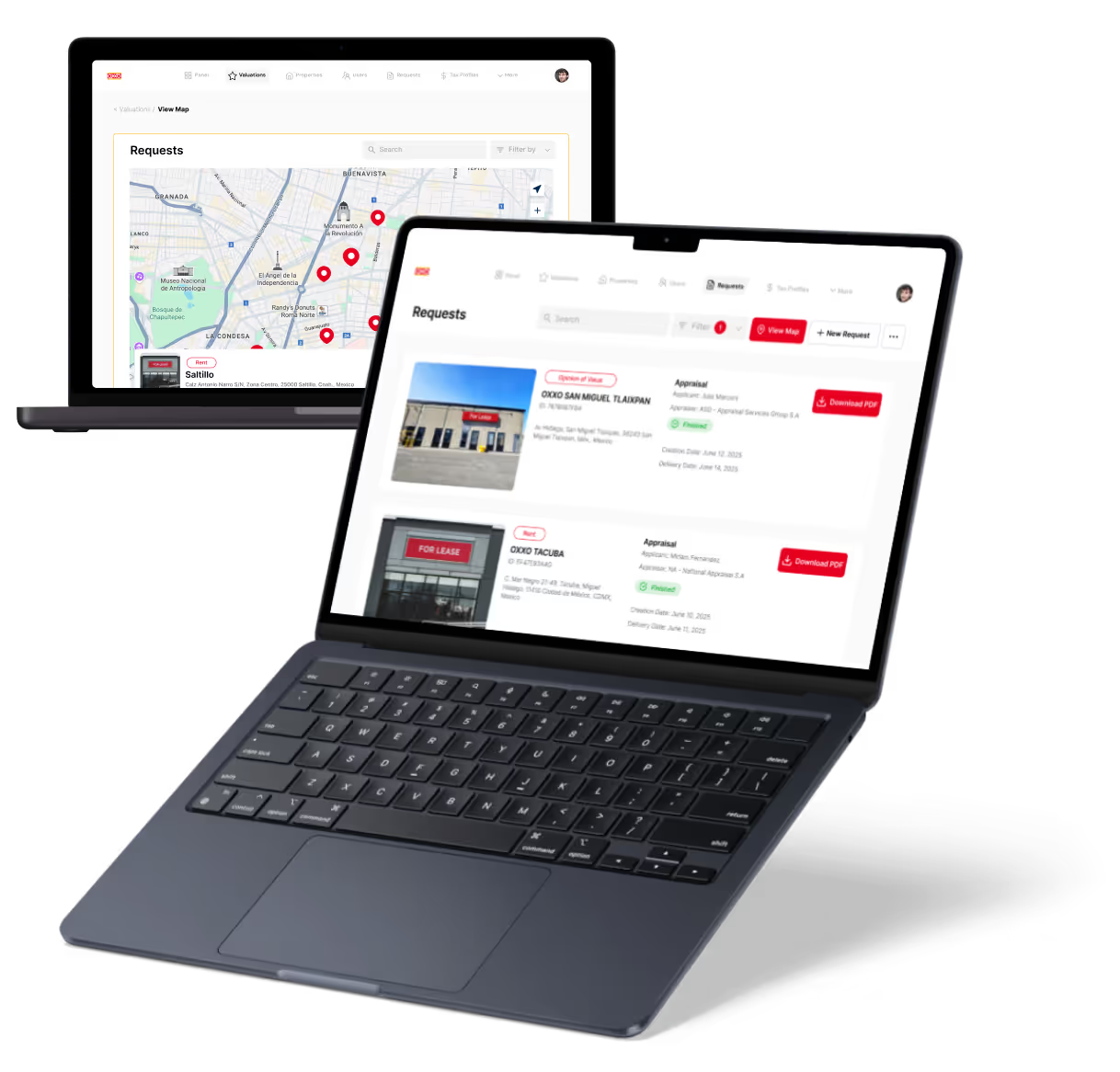
%20(Custom).avif)






